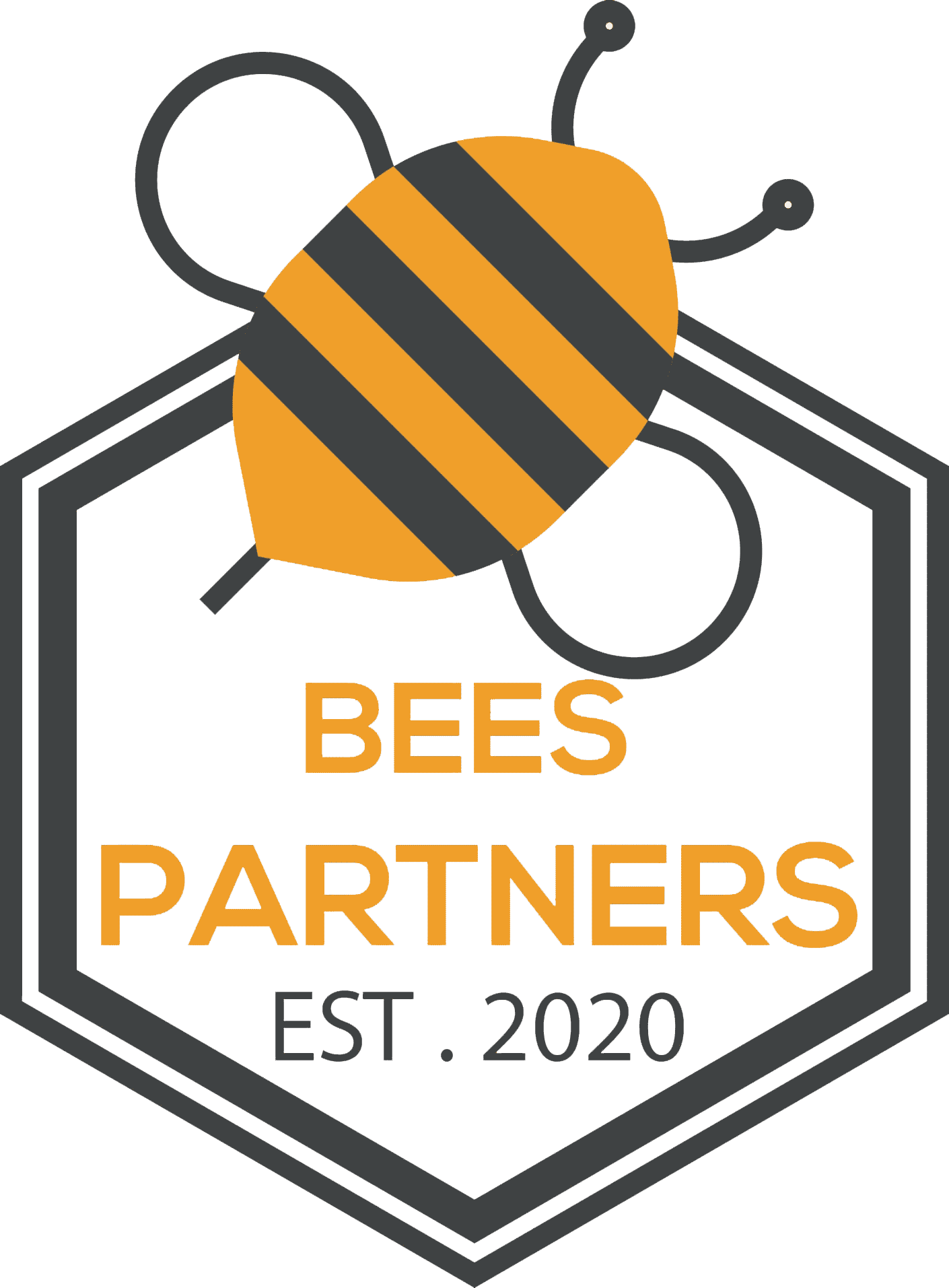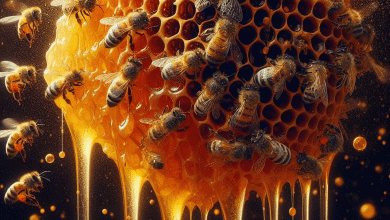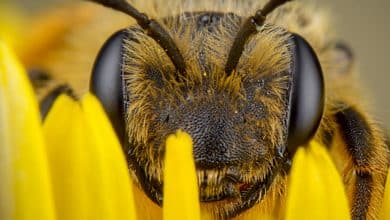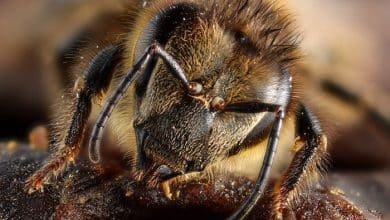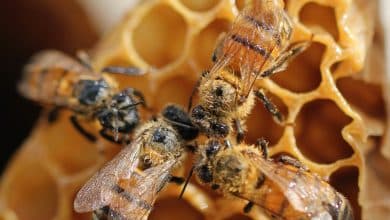How the Honey Bee Health Coalition is Saving Pollinators Worldwide
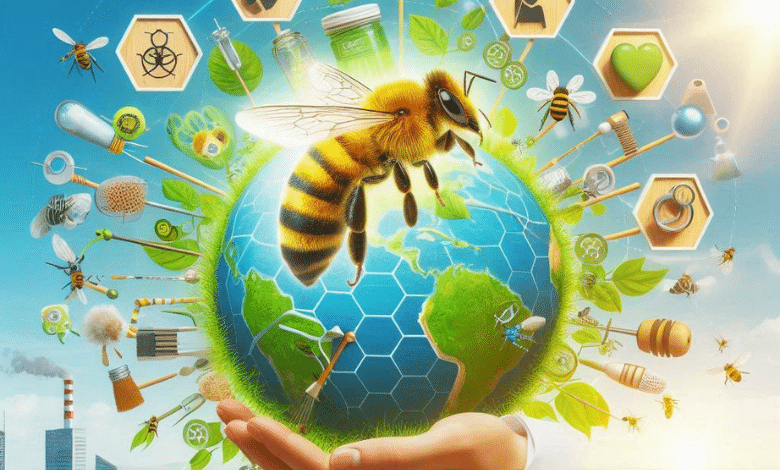
Honey Bee Health Coalition. When we think about the cycle of life on our planet, it’s difficult to overlook the critical role that pollinators play in sustaining our ecosystems and food systems.
Pollinators, which include bees, birds, butterflies, bats, and even certain insects, are responsible for the pollination of around 75% of the world’s flowering plants and nearly 35% of global food production. This contribution means that without pollinators, our plates would be significantly less colorful and diverse. Consider this: approximately one in three bites of food we consume every day relies on pollinators to reach our tables.
From the fresh fruits and vegetables we enjoy to the nuts and seeds in our diets, pollinators are fundamental in ensuring agricultural viability. The economic importance of pollinators cannot be overstated, as they support billions of dollars in agriculture throughout the U.S. and Canada alone.
Keeping them healthy is vital not only for the sustenance they provide but also for preserving biodiversity and ecosystems. To illustrate, think about your favorite meal. It likely contains ingredients like tomatoes, cucumbers, and berries—each needing pollination. In essence, the health of pollinators is synonymous with our health, making their conservation a shared responsibility that extends beyond agriculture.
Role of Honey Bees
Among the various pollinators, honey bees stand out as particularly vital. Not only do they contribute significantly to the pollination of crops, but they also produce honey, which feeds millions and forms a crucial part of many local economies and cultures around the world.
A staggering three-quarters of commercial fruit, vegetable, and nut crops depend on honey bee services. This includes favorites like almonds, apples, and blueberries! However, the role of honey bees transcends agriculture. They are integral to maintaining the biodiversity of ecosystems. A thriving population of honey bees promotes diverse plant life, which in turn provides habitats for other animals.
Unfortunately, honey bee populations are declining at an alarming rate, caught in the crossfire of human activity and environmental changes. Factors like pests, diseases, pesticide exposure, and habitat loss have contributed to significant overwintering losses that range from 28-33%, a stark contrast to historical figures of 10-15%. In personal experiences shared by beekeepers, the loss of hives weighs heavily.
One beekeeper recounted losing 100 of his 300 hives due to colony collapse—a chilling reminder of the fragility of bee populations. Recognizing the urgency, initiatives like the Honey Bee Health Coalition have emerged to implement collaborative solutions aimed at safeguarding these essential creatures.
As we push forward, understanding the intrinsic link between our food systems and the health of honey bees is paramount. The decline in their populations poses a direct threat not only to agriculture but to our future food supply. Advocating for their health and survival is thus not just an environmental concern but a crucial act of preservation for humanity itself.
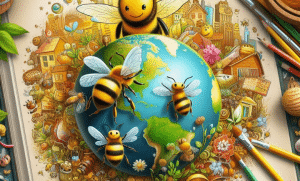
Contents
- 1 Threats to Pollinators
- 2 Honey Bee Health Coalition Overview
- 3 Initiatives to Save Pollinators
- 4 Impact of Coalition’s Efforts
- 5 Future Directions
- 6 What is the Honey Bee Health Coalition?
- 7 What is the Honey Bees Program?
- 8 What is the Honey Bee Project?
- 9 What is the Most Effective Treatment for Varroa Mites?
Threats to Pollinators
Pesticide Use
One of the primary threats facing pollinators, particularly honey bees, is the extensive use of pesticides in agricultural practices.
Pesticides are essential for managing crop pests and diseases; however, they can also have detrimental effects on non-target species, including vital pollinators. Many pesticides, especially neonicotinoids, have been linked to cognitive impairments in bees that affect their foraging ability and communication. It’s akin to taking a wrong turn in a familiar neighborhood; bees may struggle to navigate their way back to the hive after exposure.
Consider the story shared by a local beekeeper who noticed a startling decrease in honey production after nearby farmers applied pesticides during blooming seasons. Her bees, which would typically flourish, returned with reduced foraging patterns, heavily impacting her livelihood. To underscore this challenge, here are a few key points regarding pesticide use:
- Incidental Exposure: Bees often come into contact with pesticides when they forage on treated plants, accidentally bringing harmful chemicals back to their hives.
- Synergistic Effects: The combination of pesticides and other stressors (like poor nutrition and habitat loss) can have compounded negative effects on bee health.
- Economic Impact: The decline in bee populations can have financial ramifications for agricultural producers as well, leading to reduced crop yields.
In addressing these issues, the Honey Bee Health Coalition promotes best management practices that can help reduce pesticide exposure without sacrificing crop productivity.
Educating farmers and pesticide advisers on responsible pesticide application is a vital step toward mitigating this threat to bee populations.
Habitat Loss
In addition to pesticide use, habitat loss remains a significant threat to pollinators. As urban areas expand and agricultural land is intensified, the natural habitats necessary for bees to thrive are disappearing. Traditionally, bees require a variety of blooming plants for nutritional diversity—think of it as a gourmet buffet, where a broad selection sustains their health.
However, the decline in wildflower populations due to land-use changes and monoculture practices limits their access to this varied and nutritious diet. Personal anecdotes from beekeepers illustrate the struggle. One beekeeper expressed concern about the changing landscape surrounding his apiary.
Previously rich in floral diversity, the area has now been converted into large monoculture fields, offering minimal nutrition for his bees. The impacts of habitat loss include:
- Reduced Forage Options: A narrow selection of plants can lead to nutritional deficiencies in bee populations, which makes them more susceptible to pests and diseases.
- Increased Competition: As habitats shrink, bees must compete more vigorously for limited resources, putting additional stress on already beleaguered populations.
- Fragmented Ecosystems: Habitat loss breaks up natural habitats into smaller patches, isolating pollinator populations and limiting their ability to thrive.
Fortunately, initiatives like those from the Honey Bee Health Coalition are promoting on-farm practices that enhance pollinator habitats. By working with farmers and landowners to plant native flower species and maintaining varied landscapes, the coalition strives to create sustainable environments that support both agriculture and bee populations.
As we move forward, recognizing these threats and implementing collaborative solutions will be crucial to ensuring the health of our pollinators and, by extension, our food supply.

Honey Bee Health Coalition Overview
Mission and Goals
The Honey Bee Health Coalition was born out of recognition for the vital role that honey bees play in our agriculture and food systems. With mounting pressures on bee populations, this coalition brings together a diverse group of stakeholders to champion the health of honey bees and other pollinators.
Their mission is straightforward yet profound: to collaboratively implement solutions that ensure healthy populations of honey bees within productive agricultural systems and thriving ecosystems. To illustrate the urgency of this mission, think back to the earlier mention of how one in three bites of our food depends on bee pollination. The Coalition’s goals can thus be summarized as follows:
- Enhancing Pollinator Stewardship: By promoting best practices on farms, the coalition is dedicated to ensuring that bee populations are cared for while simultaneously controlling crop pests and improving yields.
- Addressing Key Stress Factors: Recognizing that honey bee health is influenced by a multitude of factors—from hive management and nutrition to pesticide exposure—the coalition adopts a holistic approach.
- Educating and Engaging Stakeholders: The Coalition not only seeks to provide beekeepers with tools and resources but also engages farmers, researchers, conservationists, and the public to foster a community-centric approach to bee health.
By highlighting on-farm practices that enhance access to nutritious diets for pollinators, the coalition aspires to create an environment where both those who produce food and those who pollinate it can thrive.
Collaborating Organizations
One of the most remarkable aspects of the Honey Bee Health Coalition is its collaborative nature. The coalition brings together an extensive and varied network of organizations, each contributing unique knowledge, resources, and perspectives toward a common cause.
For example, consider the involvement of beekeeping associations, agribusinesses, and even government agencies. This diverse membership includes:
- Beekeeping Federations: Such as the American Honey Producers Association, which provides direct insights into the challenges faced by beekeepers.
- Agricultural Groups: Like the National Corn Growers Association, which holds a vested interest in promoting sustainable agricultural practices that preserve pollinator health.
- Conservation Organizations: Entities like the Bee and Butterfly Habitat Fund focus on creating and maintaining habitats conducive to the well-being of pollinators.
Moreover, collaboration extends to educational institutions and research organizations, such as Michigan State University Extension, which provide scientific expertise that informs the coalition’s initiatives.
As an example, a partnership with the U.S. Environmental Protection Agency enables the Coalition to work closely on developing practices and policies that safeguard bee populations from harmful chemicals. The coalition operates under the guidance of the Keystone Policy Center, ensuring that all members participate equally and contribute to a consensus-driven approach.
This collaborative model is a testament to the belief that by working together—across organizations, industries, and disciplines—an effective and sustainable solution for honey bee health can be achieved. In summary, the Honey Bee Health Coalition exemplifies the collective action needed to protect one of our most crucial natural resources.
By promoting stewardship, sharing resources, and creating partnerships, they are paving the way for a more resilient future for honey bees and the ecosystems that rely on them.
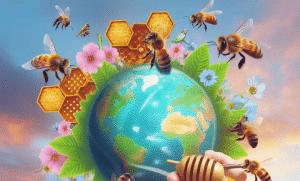
Initiatives to Save Pollinators
Research and Monitoring
In the ongoing effort to safeguard honey bee populations, research and monitoring initiatives play an integral role.
The Honey Bee Health Coalition recognizes that understanding the challenges bees face is critical for effective intervention. Consider this: a dedicated group of researchers has been diligently studying the impact of environmental factors on bee health.
What they’ve found is a web of influences that range from pesticides to nutrition and the presence of pests like the infamous Varroa mite. The Coalition has developed tools such as the “Tools for Management” guide, which provides beekeepers with best practices for detecting, monitoring, and controlling mite infestations.
This extensive guide has been a game-changer, downloaded by thousands of beekeepers across North America, signaling a strong demand for scientifically-backed resources. Key aspects of the research and monitoring initiatives include:
- Data Collection: Partnering with universities and research organizations to gather data on bee health trends, allowing for the identification of emerging threats.
- Field Studies: Implementing hands-on field studies to evaluate the effectiveness of various pest control methods while observing their impact on bee wellbeing.
- Community Engagement: Developing relationships with local beekeepers to ensure they have the latest information and tools right at their fingertips.
One aspiring beekeeper shared how attending a workshop run by the Coalition transformed her approach to hive management. After learning about the monitoring techniques specified in the guide, she was able to proactively identify potential issues before they escalated, boosting her hive’s health and productivity.
These research and monitoring efforts not only empower individual beekeepers but also contribute to broader knowledge that informs policies and practices throughout the agricultural sector.
Education and Outreach
Education goes hand-in-hand with research in the mission to save pollinators. The Honey Bee Health Coalition places a strong emphasis on outreach, ensuring that valuable information reaches various stakeholders—from beekeepers and farmers to agribusiness professionals and the public.
A prime example of effective outreach is the Bee Understanding Project, which fosters dialogue between beekeepers and growers through innovative job swap programs. By offering hands-on experiences, beekeepers gain insights into agricultural practices while growers learn about the challenges honey bees face.
One participant highlighted how walking in each other’s shoes led to a revelation about the interconnected roles they play in food production and pollinator health. Education efforts emphasize:
- Workshops and Seminars: Regularly scheduled educational events focused on various aspects of bee health, pest management, and sustainable agricultural practices.
- Resource Development: Creating comprehensive materials that cover topics such as hive management, pollinator-friendly practices, and the effects of pesticides. These resources are often made available for free, making them accessible to a wider audience.
- Community Engagement: Local initiatives that encourage schools, community gardens, and homeowners to plant pollinator-friendly species, thereby creating habitats within urban settings.
Through these initiatives, the Coalition aspires to build a community of informed advocates for honey bee health. By arming people with knowledge and practical tools, the Coalition fosters a collective effort to protect these vital pollinators, ensuring both their survival and the continued productivity of our agricultural systems. After all, a world without bees is a world with limited possibilities for food production and ecological diversity.
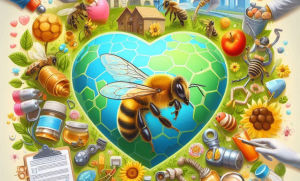
Impact of Coalition’s Efforts
Positive Trends in Pollinator Populations
The collaborative initiatives of the Honey Bee Health Coalition have begun to bear fruit, manifesting in encouraging trends within pollinator populations.
As outreach efforts expand and beekeepers adopt best management practices, many are noticing healthier hives and increased colony resilience. For instance, a survey conducted among beekeepers revealed that a significant percentage reported improvements in honey bee survival rates.
This follows the implementation of the Coalition’s Tools for Varroa Management Guide, which provides essential resources on monitoring and controlling Varroa mites—one of the most significant threats to bee populations today. Key indicators of these positive trends include:
- Reduced Colony Losses: Many beekeepers have reported fewer incidents of colony collapse, particularly in areas where the Coalition’s resources are heavily utilized.
- Increased Forage Availability: Through efforts to enhance forage and nutrition, local environments are being transformed to support a more diverse range of flowering plants, providing bees with nutritious food sources.
- Community Engagement: Workshops and educational outreach have engaged communities, fostering a growing awareness about the importance of pollinators. This grassroots momentum is vital for long-term sustainability.
Drawing from personal experiences, one local beekeeper shared how the introduction of more native plants—supported by the Coalition’s initiatives—has led to a noticeable increase in bee activity around her hives.
The sight of bees bustling from flower to flower has reignited her passion for beekeeping and underscored the positive impact of community-led stewardship.
Success Stories from the Field
The Coalition’s influence is palpable in a myriad of success stories that illustrate its effectiveness in advancing honey bee health. One standout initiative is the “Bee Integrated” Demonstration Project, which brings together farmers and beekeepers to implement synergistic methods for enhancing pollinator health.
In the upper Midwest, researchers and practitioners have pioneered a model that combines pollinator forage with strategic hive management practices. Beekeepers partnering with row crop producers reported a remarkable uptick in both honey yield and overall hive health.
- Case Study: A farmer who traditionally relied on monoculture crops formed a partnership with local beekeepers and adopted best practices from the Coalition. He planted pollinator-friendly crops alongside his usual corn and soybeans, leading to not only a thriving bee population but also an 18% increase in his crop yield due to enhanced pollination.
Moreover, the Coalition’s education initiatives have led to a surge in interest from novice beekeepers, spurred by user-friendly video guides that demystify beekeeping practices.
Scores of new beekeepers across North America have expressed gratitude for the accessible learning resources, helping them navigate what can often seem like a complex journey into beekeeping, from hive management to mite control.
Ultimately, these success stories underscore the importance of cooperative action. By equipping stakeholders with the resources they need, the Honey Bee Health Coalition is not just enhancing honey bee populations; it’s cultivating a culture of stewardship that promises a sustainable future for our pollinators.
As these trends continue to emerge, the Coalition remains committed to fostering an environment where honey bees and agricultural systems flourish side by side.
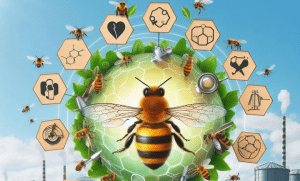
Future Directions
Long-term Sustainability Strategies
As the Honey Bee Health Coalition continues its mission to ensure the health of honey bees and other pollinators, the focus is shifting toward long-term sustainability strategies that can yield lasting benefits for these vital creatures.
Given the complex factors affecting bee populations—from pathogens and pesticide exposure to habitat loss—it’s crucial that these strategies are multifaceted and adaptable. One critical avenue is the improvement of forage and nutrition availability. By working closely with farmers and landowners, the Coalition promotes planting native flowering plants and implementing practices that enhance pollinator habitats.
The goal isn’t just to create temporary solutions but to foster environments where bees can thrive naturally over the long haul. Key components of the strategy include:
- Diverse Floral Resources: Encouraging agricultural practices that provide diverse pollinator-friendly flowers, ensuring bees have constant access to nutritious food throughout the seasons.
- Research on Genetic Stock Improvement: By promoting genetic diversity within honey bee populations, including selecting for traits that increase resistance to diseases and pests, the Coalition aims to strengthen hives against common threats.
- Community-Centric Approaches: Engaging local communities through educational programs and workshops to instill the importance of pollinator conservation at a grassroots level.
For example, a recent neighborhood initiative aimed at transforming community gardens into pollinator havens has seen great success. Residents learned to plant diverse flora, creating attractive habitats that not only support local bees but also educate and engage the community in environmental stewardship.
Policy Advocacy and Engagement
The role of policy advocacy cannot be underestimated in the coalition’s efforts to safeguard pollinators. By actively engaging with lawmakers, regulatory agencies, and industry stakeholders, the Honey Bee Health Coalition seeks to influence policies that support the health of honey bees and promote sustainable agricultural practices. A couple of ways they are pushing for effective policy measures include:
- Developing Managed Pollinator Protection Plans (MP3s): These plans aim to foster communication and cooperation among beekeepers, farmers, agribusinesses, and government agencies, helping to address the risks that bees face from agricultural practices and pesticide use.
- Promoting Investment in Research and Funding: Advocating for increased funding for honey bee health research is vital for developing novel solutions to combat the pervasive threats affecting these pollinators.
For instance, recent conversations with policy leaders have opened doors for grant opportunities specifically aimed at honey bee health research.
This can lead to new discoveries, such as potential biological controls for pests or innovative methods for sustainable queen rearing. In personal reflection, a local advocate shared how the Coalition’s outreach initiatives have influenced more youth to consider careers in agriculture and environmental science, driven by a newfound appreciation for the ecological role of bees.
Educating the next generation will help create a future where pollinator health is prioritized and valued. Through these combined efforts in long-term sustainability strategies and policy advocacy, the Honey Bee Health Coalition is laying the groundwork for a robust future.
A future where honey bees not only survive but thrive, ensuring that generations to come will continue to enjoy the benefits they provide. The commitment of all stakeholders is essential in this journey, reinforcing that protecting bees is, indeed, a collective responsibility.
What is the Honey Bee Health Coalition?
An Overview of the Coalition’s Purpose
The Honey Bee Health Coalition (HBHC) is a vital alliance formed to address the pressing challenges faced by honey bees and other pollinators.
Its mission is fundamentally rooted in the collaborative implementation of solutions that ensure a healthy population of honey bees and promote the overall well-being of pollinator ecosystems. Established to find common ground among various stakeholders, the Coalition includes beekeepers, growers, researchers, government agencies, agribusinesses, conservation groups, manufacturers, and consumer brands.
This diverse assembly underscores the understanding that the health of honey bees is intertwined with agricultural productivity and, ultimately, global food security.
- Diverse Stakeholder Collaboration: The Coalition thrives on the collaboration of over 40 organizations, emphasizing teamwork among beekeepers, farmers, researchers, and environmental advocates. This cooperation allows for a holistic approach to problem-solving.
- Focus on Collective Impact: With a mission to accelerate collective efforts, the Coalition sets its sights on improving pollinator health across multiple program areas, including hive management, habitat and nutrition, crop pest management, and outreach and education.
Key Initiatives and Goals
One of the greatest strengths of the Honey Bee Health Coalition lies in its focus on developing, incubating, and endorsing innovative projects that directly support honey bee health. For example:
- Hive Management: The Coalition provides beekeepers with advanced tools, techniques, and technologies necessary for effective hive management, ensuring healthier bee colonies.
- Habitat and Nutrition: It advocates for agricultural practices that enhance access to varied and nutritious diets for honey bees, crucial for their overall health and longevity.
- Crop Pest Management: The Coalition offers guidance to landowners on pest management practices that do not compromise pollinator health, reinforcing the idea that productive agricultural practices can coexist with robust bee populations.
- Educational Outreach: The efforts to educate and inform stakeholders—from beekeepers to farmers and the general public—are instrumental in fostering a community that values and prioritizes pollinator health.
For instance, through engaging educational programs and workshops, the Coalition helps participants understand the significance of bee health. A local farmer shared how the knowledge gained through Coalition-led training helped him adapt his pest management strategies in a way that protects his surrounding bee populations while still effectively managing crop pests.
A Collaborative Future
As the Honey Bee Health Coalition looks toward the future, its commitment to building a sustainable and productive environment for honey bees remains resolute.
The ongoing partnerships fostered within this cooperative framework are a testament to the belief that everyone has a role to play in the protection of bees. By encouraging involvement from various sectors of society—whether you are a beekeeper, farmer, pesticide applicator, or simply an interested gardener—there’s a growing collective movement dedicated to safeguarding these vital pollinators.
Together, through collaboration, education, and innovative practices, we can ensure that honey bees continue to thrive, supporting agricultural systems and biodiversity for years to come. The Coalition’s working ethos reminds us: protecting honey bees is not just an ecological concern; it’s a shared responsibility that impacts us all.
What is the Honey Bees Program?
Understanding the Honey Bees Program
The Honey Bees Program is a pivotal initiative under the auspices of the Honey Bee Health Coalition, aimed specifically at addressing the multitude of challenges faced by honey bees today.
As pollinators, honey bees play an essential role in our food systems and ecosystems. However, their populations are threatened by factors such as pests, diseases, pesticide exposure, and changing environmental conditions. The Honey Bees Program seeks to tackle these challenges head-on by developing evidence-based strategies and resources for beekeepers and farmers alike. One of the program’s core focuses is to understand the genetic stock of honey bees better.
By promoting genetic diversity within bee populations, the Coalition aims to build resilience against the pressures that weaken hives. This initiative is particularly relevant given the alarming rates of overwintering losses, which have ranged from 28-33%, significantly higher than historical averages.
Key Components of the Program
The Honey Bees Program encompasses several key areas designed to support the vitality of honey bee populations:
- Research Grants and Funding: The program actively seeks out and secures funding for innovative research projects. These grants are directed towards understanding honey bee behavior, health, and genetics, ultimately aiming to improve overall colony resilience.
- Best Management Practices: The Coalition endorses practical management practices tailored to the needs of both beekeepers and growers. By equipping stakeholders with proven techniques and insights, the program strives to enhance bee health and productivity.
- Education and Outreach: Raising awareness is crucial, and the Honey Bees Program emphasizes educational initiatives that engage various stakeholders, from farmers to home gardeners. Workshops and informational resources are provided to encourage better management practices and foster community involvement in pollinator protection.
- Forage Opportunity Promotion: Recognizing that nutrition is vital for bee health, the program encourages practices that create more foraging opportunities for honey bees on both public and private lands.
An inspiring anecdote comes from a local farmer who participated in a training session organized by the Coalition. After learning about the importance of planting diverse flowering crops, he redesigned part of his farm to include wildflowers.
The results were remarkable—within months, he noticed an increase in bee activity, which corresponded to a healthier pollinator population and even improved crop yields.
Engagement with Broader Initiatives
Through partnerships with various stakeholders—government agencies, academic institutions, and conservation groups—the Honey Bees Program aims to foster a shared commitment to polinator health.
The program does not operate in isolation but is part of a broader movement that includes multiple initiatives aimed at reversing the decline of honey bees globally. As awareness of the challenges faced by honey bees continues to grow, the Honey Bees Program remains a beacon of hope.
It embodies the belief that by uniting efforts, all parties involved can make a significant difference in ensuring the survival of honey bees, supporting agricultural systems, and safeguarding future food security. With ongoing support and innovative research, this program paves the way for a sustainable future for one of our most vital natural resources.
What is the Honey Bee Project?
Overview of the Honey Bee Project
The Honey Bee Project is an initiative under the broader umbrella of the Honey Bee Health Coalition, focused on finding innovative solutions to enhance honey bee health and promote sustainable beekeeping practices.
As honey bees face numerous threats, such as pests, diseases, and habitat loss, the project aims to tackle these issues through research, community engagement, and resource development. What sets the Honey Bee Project apart is its holistic approach.
The project isn’t just about addressing the immediate threats to bees; it’s also about embedding long-term sustainability within agricultural systems and ecosystems. By combining scientific research with practical applications, the Honey Bee Project fosters a more resilient and informed beekeeping community.
Key Objectives and Initiatives
The Honey Bee Project encompasses several key objectives that are flexible and adaptable, ensuring that they cater to the evolving challenges faced by honey bees:
- Understanding Threats: This project prioritizes identifying and analyzing the multiple threats impacting honey bees. Research initiatives focus on areas such as pathogen dynamics, pesticide interactions, and nutritional stressors.
- Innovative Research Grants: The project secures funding for groundbreaking research that promotes genetic stock improvements and best management practices. For example, recent grants have focused on genetic diversity in honey bees, aiming to bolster resistance against commonly encountered pests and pathogens, such as Varroa mites.
- Practical Applications: One of the exciting aspects of the Honey Bee Project is its emphasis on actionable solutions. For instance, beekeepers can access a series of guidelines and resources targeting best practices for hive management.
A beekeeper shared how implementing advice from the project helped her effectively manage varroa mites in her hives. After participating in a workshop, she learned to monitor mite populations better and apply treatments at the right times, leading to an impressive reduction in mite infestations.
- Community Engagement and Education: Raising awareness and fostering community involvement remains imperative within the Honey Bee Project. Regular outreach programs, educational sessions, and citizen science initiatives invite stakeholders to take up the cause.
For instance, the project encourages local gardeners to plant nectar-rich flowers that attract bees, improving foraging opportunities and overall bee health. Homeowners who participated reported an increased number of bees visiting their gardens, fostering a stronger connection to the significance of pollinator health.
The Future of the Honey Bee Project
As the Honey Bee Project looks ahead, its direction is shaped by collaboration, innovation, and community engagement. By bringing together diverse stakeholders—from researchers and agri-businesses to local gardeners—the project aims to create a comprehensive network dedicated to supporting and protecting honey bee populations.
With grants aimed at advancing research and promoting best practices, the Honey Bee Project is not only making strides in bee health but also instilling a collective commitment to environmental stewardship.
As beekeepers, growers, and the public continue to unite for this cause, it is clear that the Honey Bee Project is paving the way for a sustainable future, ensuring that honey bees can thrive in a changing world. Together, we can make a tangible impact in preserving bee health for generations to come.
What is the Most Effective Treatment for Varroa Mites?
An Introduction to Varroa Mites
Varroa mites, specifically Varroa destructor, pose one of the most significant threats to honey bee populations. These tiny parasites latch onto bees and feed on their bodily fluids, weakening the bees and transmitting harmful viruses in the process.
Left unchecked, a single untreated colony can become overwhelmed, leading to weakened hives and eventually colony collapse. Recognizing the urgency of tackling this issue, the Honey Bee Health Coalition has developed comprehensive resources to help beekeepers effectively manage Varroa mite infestations. So, what are the most effective treatments available?
Integrated Pest Management Strategies
A key approach to combating Varroa mites is utilizing an Integrated Pest Management (IPM) strategy. This method incorporates a combination of practices and treatments, rather than relying solely on chemicals, which can be detrimental to bee health. Here are some effective options:
- Chemical Treatments:
- Synthetic Miticides: Products like Apivar (aumethoate) and Apistan (fluvalinate) have proven effective in controlling Varroa populations. It’s essential to follow instructions carefully to avoid developing resistance.
- Formic Acid: This organic acid can effectively kill Varroa mites without harming bees when applied correctly.
- Essential Oils: Treatments using essential oils like thyme and tea tree oil are available and can be effective against mites.
- Physical and Mechanical Controls:
- Drone Brood Removal: Since Varroa mites preferentially reproduce in drone cells (male bee brood), removing drone comb can significantly reduce mite populations.
- Screen Bottom Boards: These not only allow mites to fall out of the hive but can also improve ventilation and reduce humidity—a factor that favors mite survival.
- Monitoring and Sampling:
- Regular monitoring of mite levels is crucial. Beekeepers can use sugar shakes or alcohol washes to check mite populations before they reach damaging levels.
A personal story from a local beekeeper illustrates the importance of these tactics. After struggling with a high mite count, he started employing the sugar shake method to monitor levels and combined it with both formic acid and drone brood removal, which resulted in both healthier bees and increased honey production.
Innovative Solutions and Future Directions
The Honey Bee Health Coalition emphasizes that ongoing research is vital for developing effective Varroa management strategies. Current studies are focusing on the genetic stock improvement of honey bees to enhance natural resistance against mites, as well as exploring innovative chemical treatments.
For example, new methods utilizing RNA interference (RNAi) to target Varroa specifically holds promise and can revolutionize the way beekeepers approach pest management in the future. As studies progress and more options become available, the Coalition continues to support beekeepers through education and resource sharing, empowering them to make informed decisions about their mite management strategies.
In conclusion, by combining various management techniques, regularly monitoring the health of their colonies, and staying informed about new treatments, beekeepers can effectively combat Varroa mites. The efforts of the Honey Bee Health Coalition are making strides towards sustaining bee populations, safeguarding our food supply, and promoting healthy ecosystems for future generations.
As we wrap up our exploration of the incredible work being done by the Honey Bee Health Coalition, I hope you’re inspired by the commitment and collaboration among agricultural stakeholders to protect and enhance the health of our vital pollinators.
The efforts to combat Colony Collapse Disorder and ensure a thriving bee population are more important now than ever. I’d love to hear your thoughts on the topics we’ve covered. What resonates most with you about the Coalition’s initiatives? How do you think we can further support the health of honey bees in our communities? Your insights and ideas are invaluable as we strive to foster a healthier environment for these essential pollinators.
Important Notice on Content Rights
All rights reserved to Bees Partners © 2025. Copying, republishing, translating, or quoting more than 10% of this content is prohibited without prior written permission. For commercial or academic use, please contact: info@beespartners.dk.
Note: Limited quotation is allowed with clear source attribution and a direct link to the original article.
